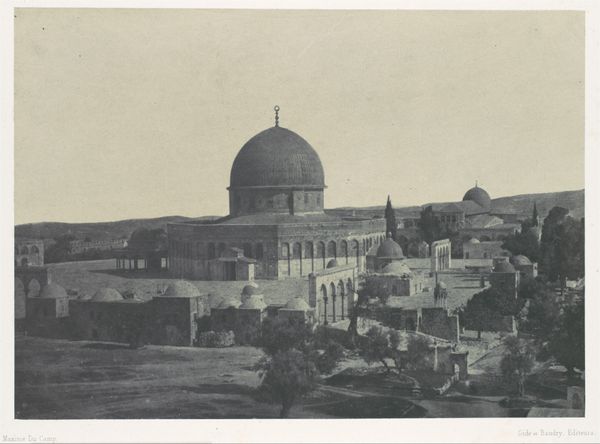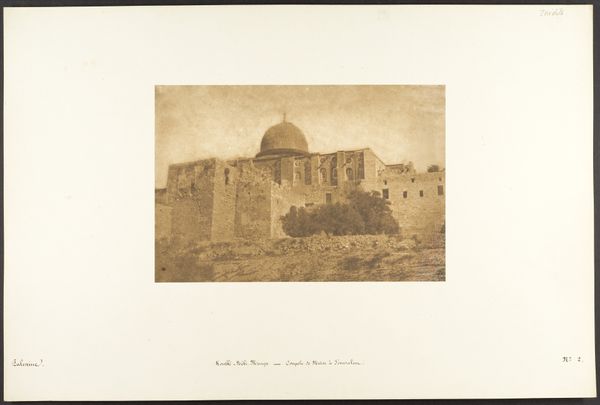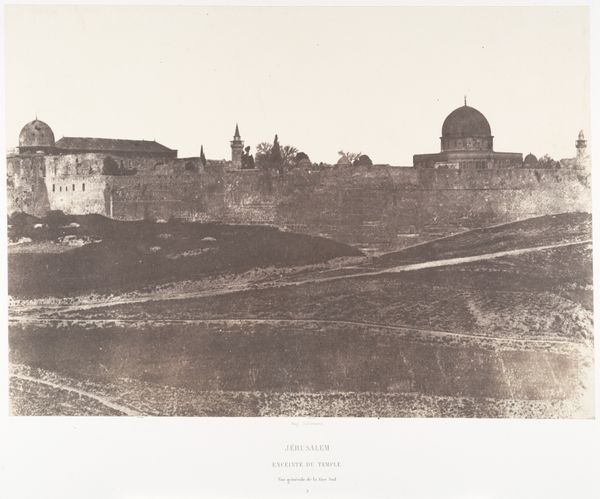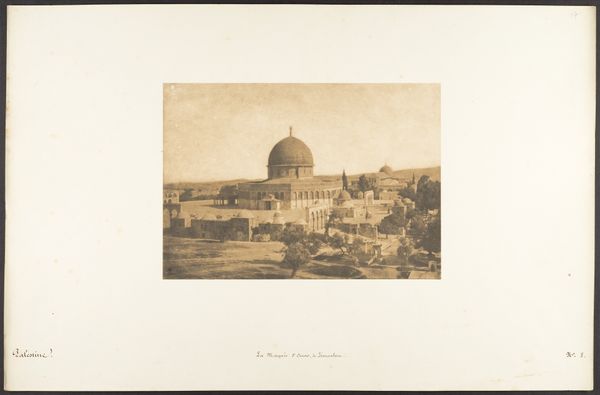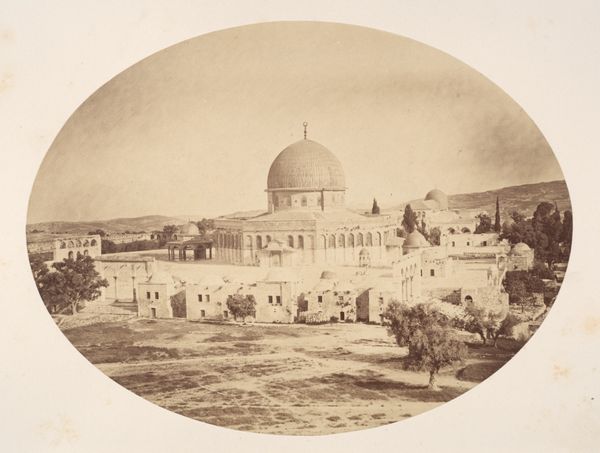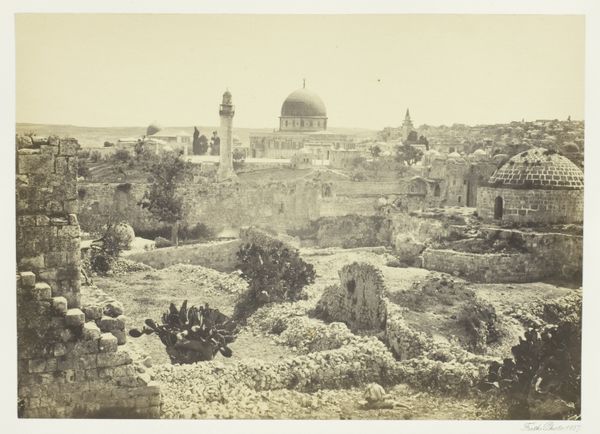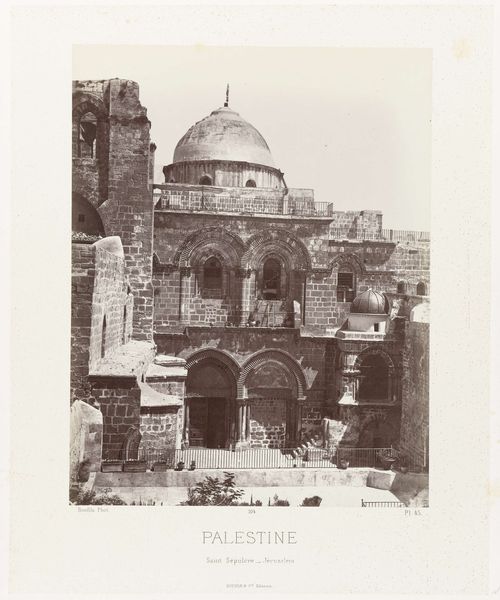
Koubbé-Nébi-Monça - Coupole de Moïse à Jérusalem 1849 - 1851
0:00
0:00
photography, gelatin-silver-print, architecture
#
landscape
#
photography
#
orientalism
#
gelatin-silver-print
#
architecture
#
building
Dimensions: Image: 6 in. × 8 5/16 in. (15.3 × 21.1 cm)
Copyright: Public Domain
Curator: Welcome! Today, we’ll be discussing Maxime Du Camp's "Koubbé-Nébi-Monça - Coupole de Moïse à Jérusalem," a gelatin-silver print created sometime between 1849 and 1851. It’s a fascinating example of early photography and Orientalist art, currently residing at the Metropolitan Museum of Art. Editor: Immediately, I’m struck by the tonal range—it’s almost monochromatic, creating this very ethereal, dreamlike effect. The textures seem so tactile, especially on the stone walls. It looks imposing! Curator: It's a photograph capturing the Tomb of Moses near Jerusalem, a site layered with complex historical and religious significance, specifically concerning narratives of Orientalism in that period. Du Camp was part of a wave of Western artists who depicted the Middle East through a lens of both fascination and colonial gaze. Editor: Looking closer at the architecture, the geometric forms create a strong sense of order, anchoring the photograph. But the hazy atmosphere softens these rigid shapes, giving it that otherworldly quality I mentioned earlier. It creates this kind of formal tension, I think. Curator: Absolutely. And we can't ignore how the photograph engages with broader political contexts, especially France’s increasing engagement in the Middle East during this period. How the “Orient” was imagined and portrayed really impacted policies and public perceptions back home. Editor: Yes, it acts as this sort of… lens through which the Western world began to see and engage with different cultures and histories. You see it replicated throughout painting during that period, this almost stylized architectural rendition that almost romanticizes Middle Eastern design, or extracts certain components, rather. Du Camp has caught so much detail in that architecture and how it rises from that dry landscape. Curator: I agree. Understanding the artwork calls on a close look at the artist’s colonialist mindset while acknowledging his capacity to preserve a cultural heritage during a tumultuous period. Editor: It leaves me thinking about the photograph’s legacy, and how we continue to interpret and represent cultural spaces through art today, and its potential manipulation, in particular. Curator: Precisely. This image offers both visual richness and profound lessons about the power of representation.
Comments
No comments
Be the first to comment and join the conversation on the ultimate creative platform.
